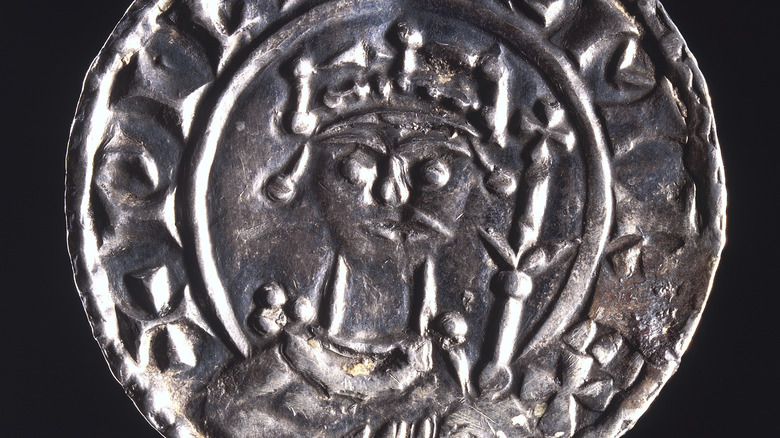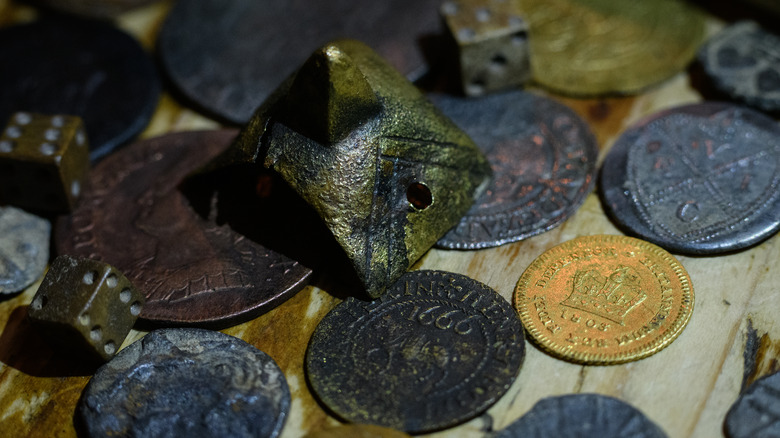The Story Of The Chew Valley Hoard Discovery
On a damp August day in 2019, two metal-detector enthusiasts were training a small group of friends in the Chew Valley, near Somerset, when they got a beep, according to the BBC. They didn't have to dig far into the soft, West Country silt to find something that raised the hair on their necks: a silver coin, stamped with the features of William the Conqueror (like the one seen above). William had become king of England in 1066, so the coin was 900 years old, or older. They kept digging, ignoring the drizzle that was fast becoming a storm. Not far beneath the first silver coin were more like it — many more. The group of friends would finally count 2,528 silver coins, making the Chew Valley hoard the richest treasure trove in British history.
One of the treasure hunters, Adam Staples, said, "To find two unrelated coins would be almost impossible. And when there were more beeps, from two to 10, from 50 to 100, to wow, how many are there? ... From then on it was just crazy."
English law defines as "treasure" any object made of at least 10% gold or silver that is at least 300 years old, only including coins under special circumstances. A 900-year-old trove counts as special circumstances, and Staples and his friends reported the find to their local coroner, as the law requires, according to a site run by the British Museum and Amgueddfa Cymru, the National Museum Wales.
A priceless treasure
The next day the coins arrived at the British Museum in London, where experts counted and recorded them. About half the coins were minted during the reign of Harold II, the last Saxon king of England. These feature the word "pax," or peace, on them — a tragic irony, given that Harold would be violently overthrown and killed at Hastings. The rest were struck under his successor, William the Conqueror. In a fascinating detail, many of the coins had been sliced in half, or into quarters — England had not yet begun minting halfpennies and farthings, so to pay for anything less than a penny people had to use literal fractions of a penny coin.
Gareth Williams of the British Museum told Current Archaeology that "five complete pennies would be enough to buy you a sheep, so half a penny was still a considerable amount ... The entire hoard represents a flock of 500-plus sheep, or the annual income of a large estate."
That question that remains is why anyone would bury that much money. Current Archaeology speculates that the years following the Norman Conquest would have been tumultuous; it's easy to imagine someone considering their money safer in a field than in their home. Whatever their reasons, they little suspected the money they buried would wait 900 years to see daylight.

